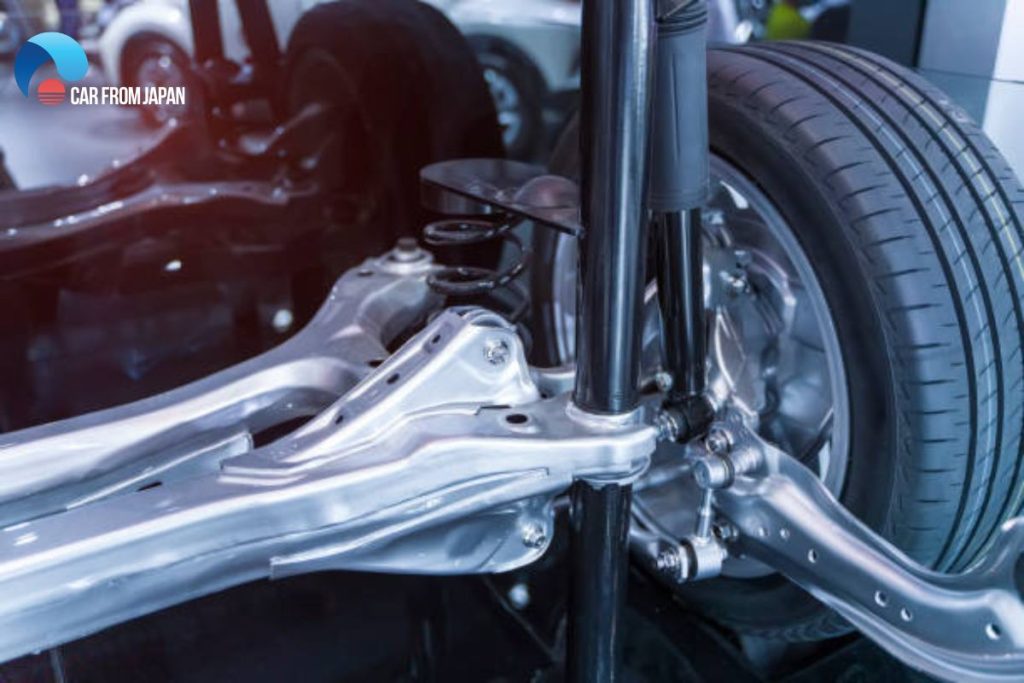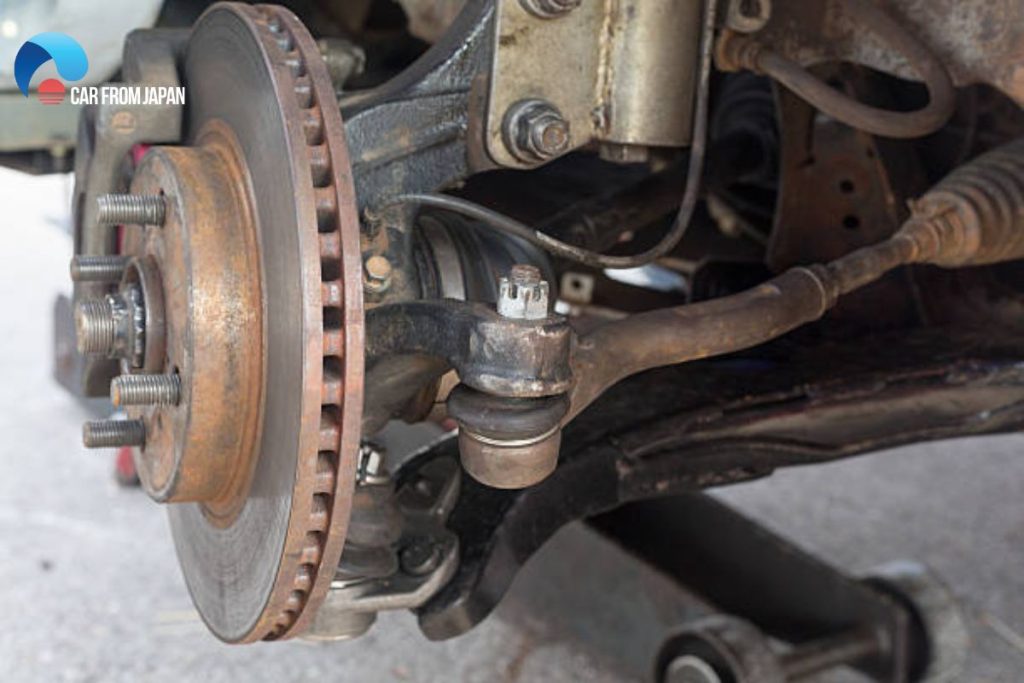Should I replace both inner and outer tie rods? It’s a very common question that we see on many search platforms. You always need to replace the outer tie rods when they go bad or wear out, but do we need to change the inner tie rods with the faulty ones at once? Here is what car experts say: “It is not necessary to replace the inner and outer tie rods at the same time.” Why? Let’s find the details in our article:
Contents
What Is A Tie Rod?
Tie rod ends are an integral part of the steering system. The main function of tie rods is to connect the main shaft, on which your front wheel is mounted at one end, to the gear mechanism at the other end. The structure of the tie rods consists of 2 parts: an outer and an inner tie rod end.
The tie rod works with the ball joint to convert the force from the steering hub link to the steering “knuckle”. Simply speaking, the tie rods help smooth handling and align your vehicle’s front end. When talking about tie rods, many drivers are confused between tie rods and ball joints. Are they the same?
The difference between tie rods and ball joints.
Not a lot of drivers know the difference between the two parts. This is the reason why we will spend a few words discussing this problem in this article about tie rods and ball joints. Both tie rods and ball joints are indispensable parts of the steering system and the front suspension. While the tie rods are an important component of the steering system, ball joints belong to the suspension system.
The responsibility of the ball joints is to support the weight of your car and help the steering system to turn the vehicle left or right. Tie rods and ball joints are not directly connected; however, they are connected through a spindle. Ball joints are located at the bottom and the top of the pivot, while tie rods are connected to control the axle as the vehicle is driven. It can be seen that those tie rods and ball joints are different parts, but they have a tight relationship in your vehicle.

Inner and outer tie rods: What are their functions?
The big difference between these parts is their location on the steering system. As the name suggests, an inner tie rod is located inside the steering system, while the outer tie rod is located on the outside of this system. The inner and outer rods connect to the steering system to move your wheels.
Usually, the inner tie rods connect to the steering rack while the outer rods link to the steering arms. The tie rods make it possible to steer and turn by moving your wheels to follow your desired direction. If tie rods don’t work properly, the steering will no longer function as intended.
As we analyze, we can see that those inner and outer tie rods are critical parts, so replacing the tie rods when they are going bad is a very important step in the overall maintenance of your car.
Should I Replace Both Inner and Outer Tie Rods At Once?
Over time, the inner or outer tie rods are going bad and need to be replaced, but commonly, not both of them are faulty at the same time. That is the reason why some drivers wonder if they should replace both outer and inner tie rods at once.
The truth is: this is not mandatory unless these parts have signs of wear and tear. However, ideally, it may be recommended, especially in high-mileage cars, because both inner and outer tie rods are likely to require a similar amount of work.
So when one of them shows signs of damage, it means the performance of the remaining tie rod will not be effective. That’s why sometimes you are advised to replace both inner and outer tie rods. If you just replace one of them, it can give you a mismatched system.
However, our best advice is that you should take your car in for an inspection when you notice the clicking sound from the front end or other warning signs. If you need a new tie rod, let’s ask your mechanic specifically if it’s an inside or outside rod, or do you need to replace both of them.
Tie Rod Replacement Cost: How Much Is It?
We are sure that you understand the importance of fixing a broken tie rod instead of driving around for a long time. But you may worry about having to replace a rod due to the cost. Because tie rods are so important, many drivers have been concerned about how much they will have to pay to get a new tie rod fitted to their car. Don’t worry! We will show every hidden cost to you.
According to statistics, the tie rod replacement will range from $155 to $250, while labor costs are about $50 to $70, and the tie rod costs are estimated between $110 and $170. It can be seen that it’s not very expensive to replace tie rods. Normally, replacing the outer tie rods will cost you $20-$95 for the part and $50-$110 for labor costs. Replacing the inner tie rod end will cost from $25 to $102 part plus $60-$150 labor, depending on your models and dealers.
It will cost you a certain amount of money to replace broken tie rods. But there are other ways that can help you save this cost. Regular inspection and maintenance of tie rods to detect early signs is a method that auto manufacturers often recommend to drivers. Sometimes minor problems with a car’s steering and alignment can turn into serious problems.

Bad Tie Rod Symptoms You Shouldn’t Ignore
A bad tie rod can cause uneven tire wear or a clunky feel when you first turn your steering wheel, and if it’s really bad. It can even stop while you are driving. Knowing the exact time to replace your tie rods is the best way to keep your car working in good condition. Any part of your car also has its lifespan, even if tie rods, because they can’t be designed to last forever. How long do tie rods last?
Tie rods are built to last for tens of thousands if we do not tell that it’s hundreds of thousands of miles without replacement. But they can be easily affected by the weather and terrain. If you always drive the car on rough roads, tie rods may degrade faster.
Following the manufacturer’s manual, you should check your tie rods every 15000 miles to make sure they are in good condition. In addition to checking your tie rods periodically. If you notice one of the symptoms below, we recommend that you change your tie rods soon to ensure safe driving.
Poor alignment is one of the most common signs you will experience when tie rods are going bad. It can cause rapid wear on one side of the tire, the feeling that your car is “pulled” to the side, even when the steering wheel is at the center.
You might hear strange sounds like rattling or clunking noises in your front end and a loose feeling when you shift into gear or turn the steering. When the tie rod is loose, it will move around the joint, making a clicking sound when driving. And if your rods are completely damaged, the wheel will not be connected to the steering system anymore.
Conclusion
If your car has a bad tie rod, you will probably try to drive it for as long as possible. And you can drive as long as you don’t put too much pressure on your vehicle. However, you can also push yourself, your passengers, and even other drivers and pedestrians at risk by continuing to drive with bad tie rods. Because your tie rods can fail without warning.
No driver wants to get into a sudden accident due to a broken inner or outer tie rod when you are driving on the road at high speed. This will be especially risky when your car will either suddenly unable to turn or pull to one side. To avoid these situations, replacing both inner and outer rods at once when one of them is going bad can be a good precaution.



